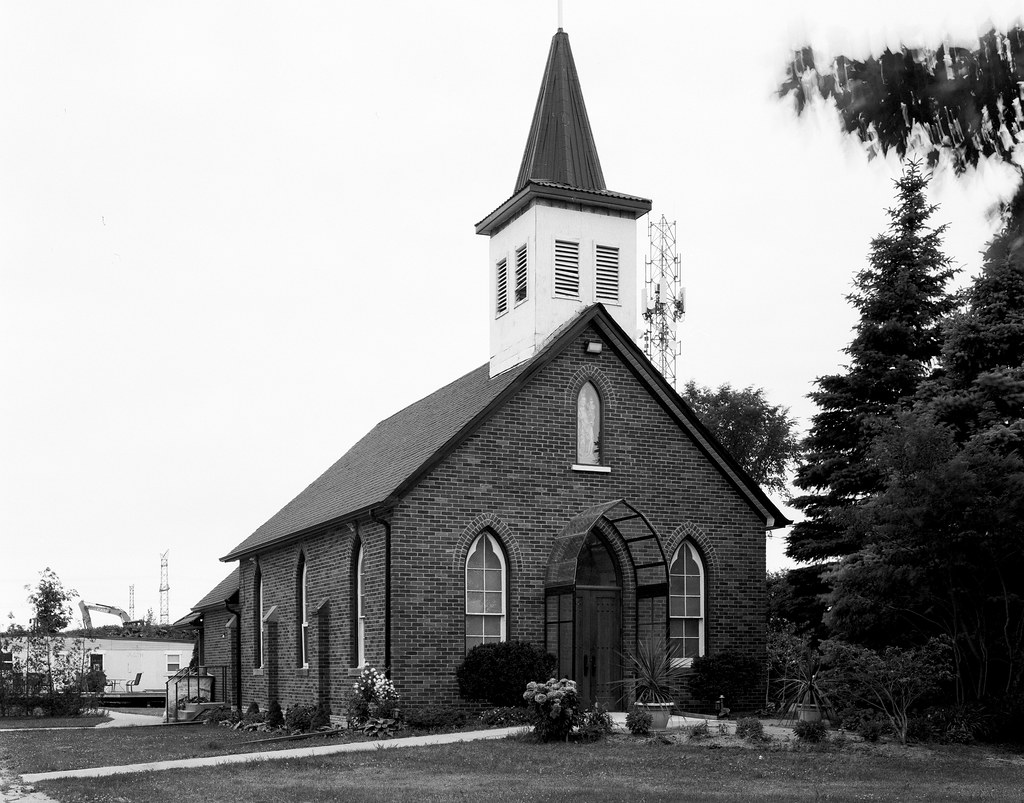When it comes to the makeup of Churches within the Halton region, during the early colonisation of the region, Roman Catholics made up a small minority. This is because most of the area was settled by those of English, American, or Scottish descent. And Catholicism was often connected to the Irish, who were often seen as second-class citizens, and often targeted by racist policies. But the Irish did make up a small percentage of the population, and there was a Roman Catholic presence in the larger urban areas of the province. And if it wasn’t for this small rural Parish, there’s a strong chance other Roman Catholic parishes would not have existed until much later.

Historically people referred to the area around Britannia Road and Ninth Line as the Catholic Swamp due to the high number of Irish settlers and the flooding that took place regularly in the fields. However, the official name for the settlement was Nolan’s Corners. Many Irish immigrants who arrived had not celebrated mass since they left their homes, cramped for months, then a long journey from whichever port they came to this backwater community. Far from any established parish, Charlie O’Hara and Bartholemew O’Connor travelled to the nearest Catholic Parish in Dundas. Today the journey of forty miles is no sweat, but with only tracks and dirt roads, such a journey was a significant feat. At Dundas, the two men convinced Father O’Reilly to visit the O’Hara farm and celebrate mass. O’Reilly undertook the journey to celebrate mass that same year and agreed to return when he could, adding the farm to his circuit of other mission stations. The Hamilton Dioses officially recognised the Parish in 1823; Daniel Hyland donated a section of his lot, and the community constructed a log church dedicated to St. Peter and a Roman Catholic cemetery. The isolated nature of the Parish resulted in mass being celebrated every four months. But the day the mass was celebrated became a significant event with Catholics coming in from all over the area, some even as far as Brampton, Milton, Georgetown and Milton. It became a community event where everyone pitched in, roasting meat and potato and baking bread to hold a meal for the celebrants following mass. And though the Parish remained small, the cemetery became the final resting place of many Irish workers on the first Welland Canal. But as the popularity increased in the mid-century, a wooden frame building replaced the original log structure in 1850, which would be replaced again in 1882 by the current brick Gothic Revival structure. During the late 19th Century, the Parish’s popularity peaked at fifty families, but the changing demographics would diminish the Parish to closure in 1890. By this point, Roman Catholic parishes were well established in the area, and it was through the formation of Holy Rosary in 1938 that the Parish was reopened as the mission station of the Milton parish. Small renovations adapted the sanctuary to the standards set by Vatican II, but the biggest rebuild of the small church took place in 1982. A new basement and small parish hall were added, and the entire church was dismantled and moved further back on the lot. But by the end of the 20th Century, the Parish was used infrequently by the Deaf community, and the Parish again closed in 2000, with most Catholics moving to the new Parish of St. Josephine Bakhita. But a small grassroots initiative in the area desired to see St. Peter’s opened again, and in 2010 that dream became a reality. Today St. Peter’s remains a mission church under St. Josephine Bakhita.
These days the sanctuary is usually behind a locked gate; I was ready to hop the fence, but the day I went, the gate was open. This was a good thing as it would be challenging to photograph the church from the other side of the fence. With the trees surrounding the church, I couldn’t compose a good shot to eliminate the cell tower behind the building from the frame. I was slightly surrounded by trees and went with the 150mm lens to give some isolation to the building and cut out most of the foliage surrounding the camera.
If you wish to worship with this congregation, they will be happy to welcome you! Please check out the congregational website for details on attending services worship either in-person on online streaming!
Web: stjosephinebakhita.ca
YouTube: youtube.com/c/stjosephinebakhitaparish